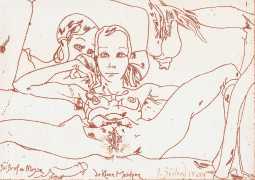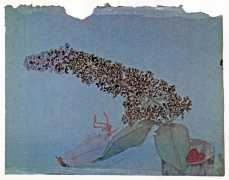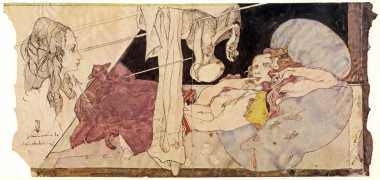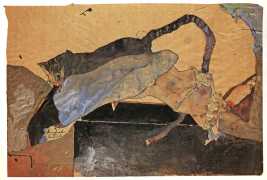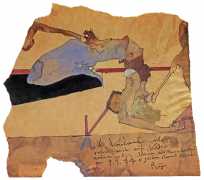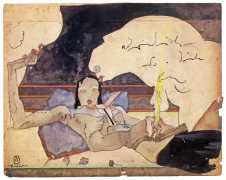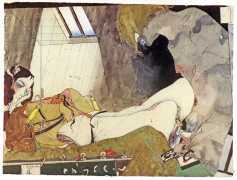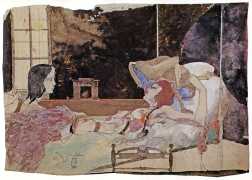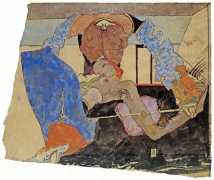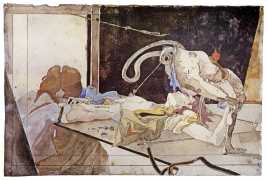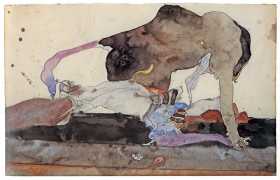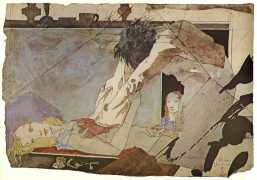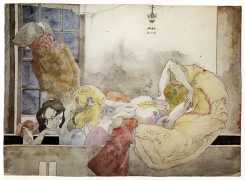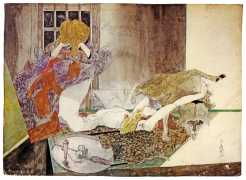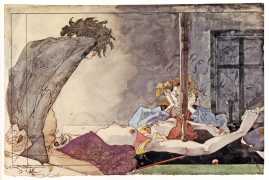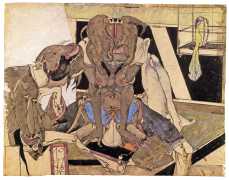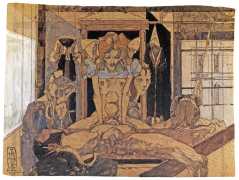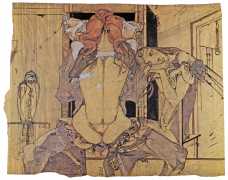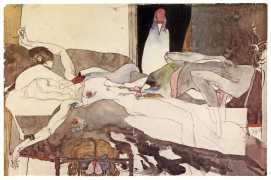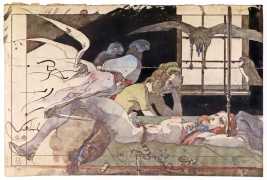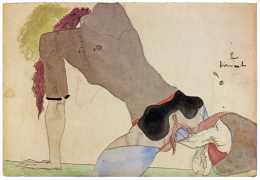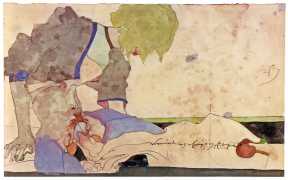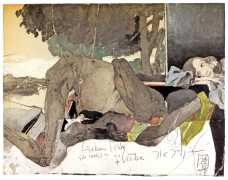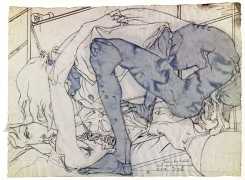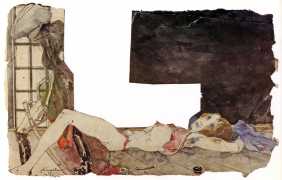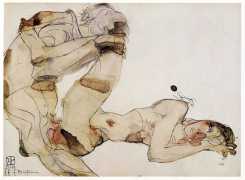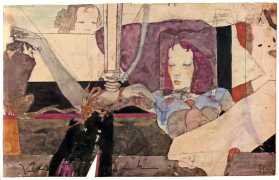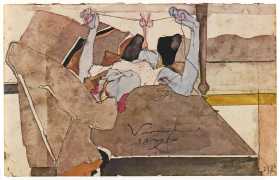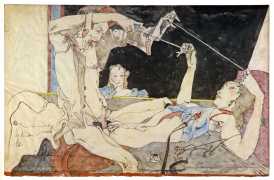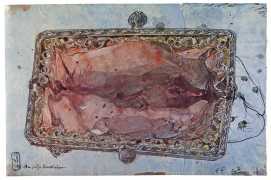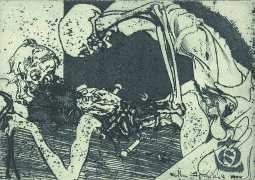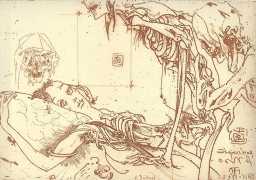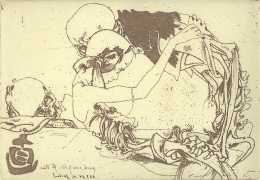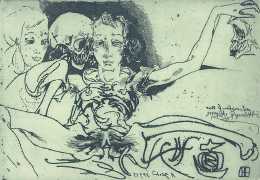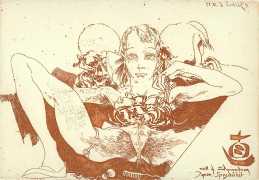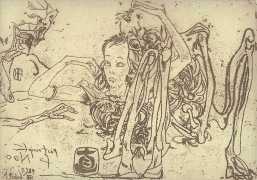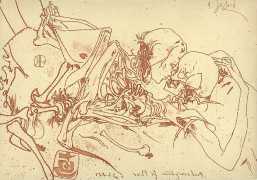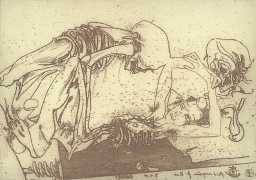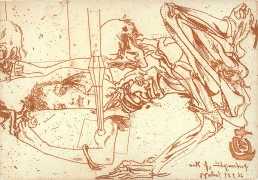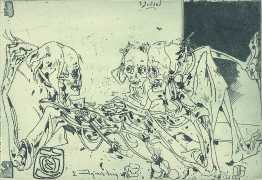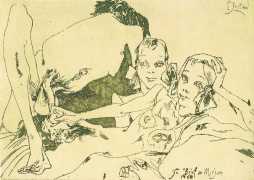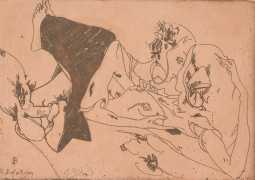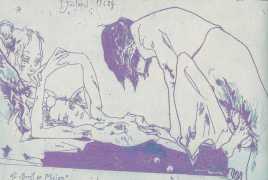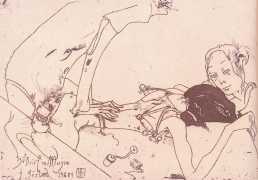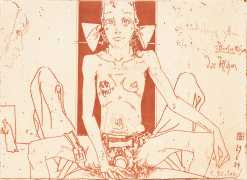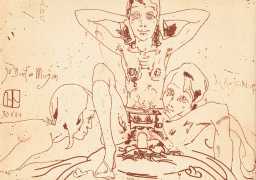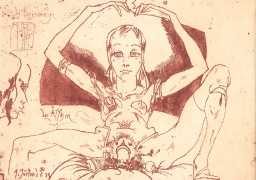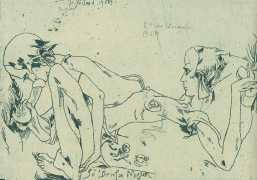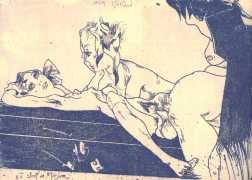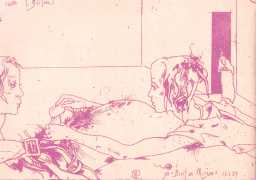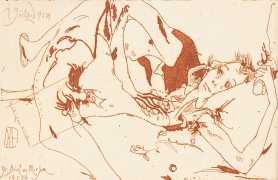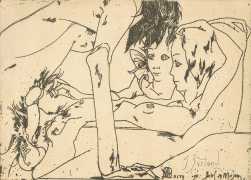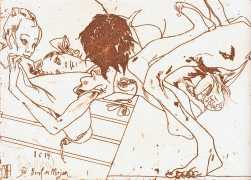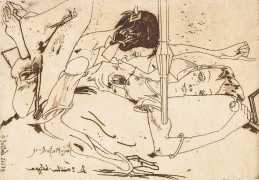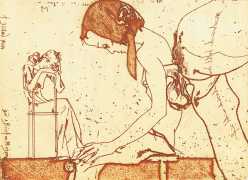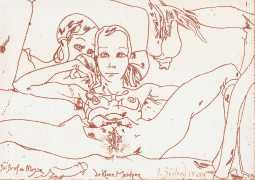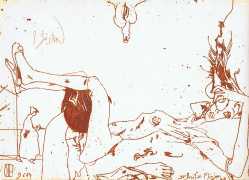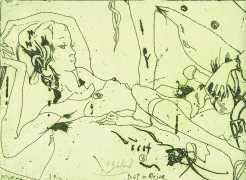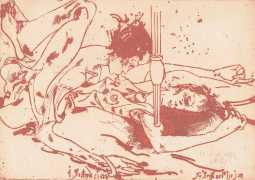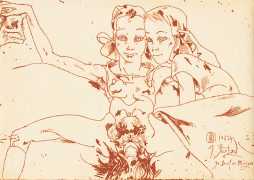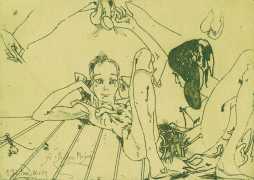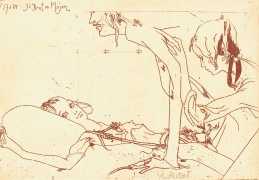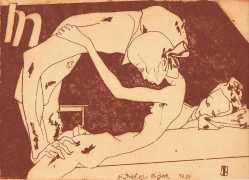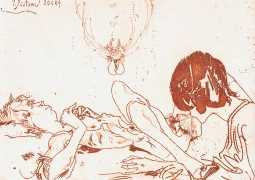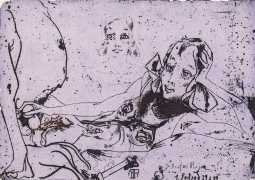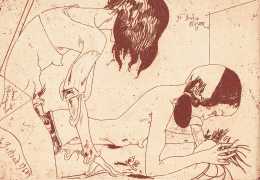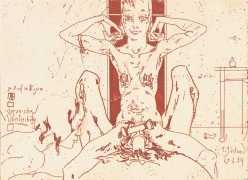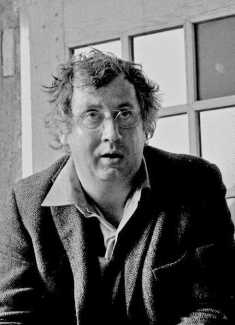 It is estimated that during his long artistic career the German artist Horst Janssen produced in excess of 30,000 drawings, paintings and etchings, a large proportion of which included elements of some of his perennial muses – loss, sex, pain and death. We have chosen to concentrate on just three of his extended portfolios, all with an emphasis on the sex.
It is estimated that during his long artistic career the German artist Horst Janssen produced in excess of 30,000 drawings, paintings and etchings, a large proportion of which included elements of some of his perennial muses – loss, sex, pain and death. We have chosen to concentrate on just three of his extended portfolios, all with an emphasis on the sex.
Janssen grew up in Hamburg with his dressmaker mother and her parents; he never knew his father. After his mother died in 1943 he was formally adopted first by his grandfather, and then by his mother’s younger sister Anna, the first significant woman in his life. In 1946, at the age of sixteen, Janssen enrolled at the Landeskunstschule (Regional Art School) in Hamburg, where he studied with Alfred Mahlau, proving to be an outstanding pupil.
His first newspaper drawing appeared in Die Zeit in 1947, and in 1948 he illustrated the first of several children’s books; this period also saw the first of many tempestuous relationships, including two with married women. The liaison with Gabriele Gutsche resulted in a son, Clemens, and that with Judith Madlung in a short prison sentence for assaulting her husband while drunk. In 1952 he received a Lichtwark scholarship and produced his first woodcuts, influenced by Edvard Munch.
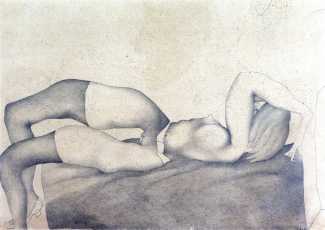
In 1957 Horst Janssen learned the technique of etching from Paul Wunderlich, which became his preferred graphic technique, mastered with great virtuosity. His etchings from this period show an obsession with detail and an emphatically erotic fantasy world. After 1963 he increasingly used the direct medium of drawing, feeling able to express his ideas in a more subtle and honest way.
Janssen could not do without women, either as an artist or in his personal life. He was married three times, and shared his bed with an almost unmanageable number of lovers. Many of them served him as inspiration: ‘They enabled him to surpass himself,’ wrote Stefan Blessin, Janssen’s biographer and long-time companion. ‘But,’ he goes on, there is nothing of the classical nude in his art. He staged the female body as he saw it in his head.’
In numerous images, a naked torso fills the entire picture. Portraits show dotted heads of girls whose faces are covered with hair. If anything was Janssen’s particular fetish, however, it was female arms. The upper arms of his third wife Verena particularly fascinated him, and their divorce resulted in the series Les bras, in which arms are tortured with balls and sticks.
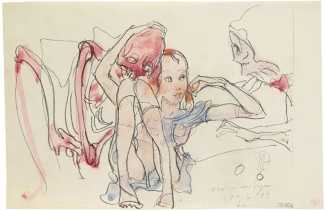
Janssen’s erotic pictures are full of hidden hints and symbolism. ‘You have to look at them carefully,’ wrote museum director Jutta Moster-Hoos in the 2014 catalogue for an exhibition of erotic art at the Horst Janssen Museum of Art in Oldenberg, which opened in 2000 and is dedicated to his work. ‘In the Phÿllis series for example, at first glance you might see a Biedermeier scene in the moonlight, but on closer inspection there are clear signs of sado-masochistic practices, with rope, pulleys and sharp implements.’
In his later years, Janssen regularly depicted painful separations and an agonising longing for younger women. He himself appears in the etching cycle Todentanz from 1974, in which skeletons and old men clutch a young woman. He portrayed himself again in Briefe an Mirjam from 1984, in which an old man with a big belly has sex with two boyish young women.

